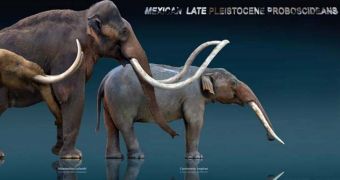A recent paper in the journal Proceedings of the National Academy of Sciences documents the discovery of the skeletal remains of two animals said to be the ancestors of present-day elephants in North America.
Researchers working with the University of Arizona in the US say the remains were first discovered in 2007 in northwestern Sonora, Mexico. However, it took a while for specialists to determine their origin.
It was only when a jawbone complete with teeth was unearthed that scientists figured out that they were not dealing with the bison remains, as believed, but with bones belonging to elephant ancestors known as gomphotheres.
"At first, just based on the size of the bone, we thought maybe it was a bison, because the extinct bison were a little bigger than our modern bison. We finally found the mandible, and that’s what told the tale,” explains researcher Vance Holliday.
As detailed in a press release on the University of Arizona's website, this long-lost species lived in South, Central, and North America thousands of years ago. They were smaller than mammoths, and closely resembled modern elephants.
The skeletal remains unearthed in northwestern Sonora, Mexico, and described in the journal Proceedings of the National Academy of Sciences belong to two juvenile animals, and are estimated to be about 13,400 years old.
Due to the fact that, for reasons still unknown, gomphotheres disappeared from North America sometime between 13,000 and 13,500 years ago, during the late Ice Age, the bones are argued to be the most recent evidence of these animals' presence on the continent.
While excavating these ancient elephant skeletal remains, researchers also came across several artifacts left behind by an early group of hunter-gatherers known as the Clovis. Spear tips, cutting tools, and flint flakes were among these artifacts.
Seeing how these ancient weapons and hunting tools were unearthed close to the two juvenile gomphotheres' bones, researchers suspect that the animals were killed by early humans, who likely considered them prey.
This theory is backed up by evidence indicating that human who inhabited Central and South America at the time these ancient elephants roamed the Earth used to hunt them and feed on them on a regular basis.
“This is the first Clovis gomphothere, it's the first archaeological gomphothere found in North America, it's the first evidence that people were hunting gomphotheres in North America, and it adds another item to the Clovis menu,” archaeologist Vance Holliday says.

 14 DAY TRIAL //
14 DAY TRIAL //